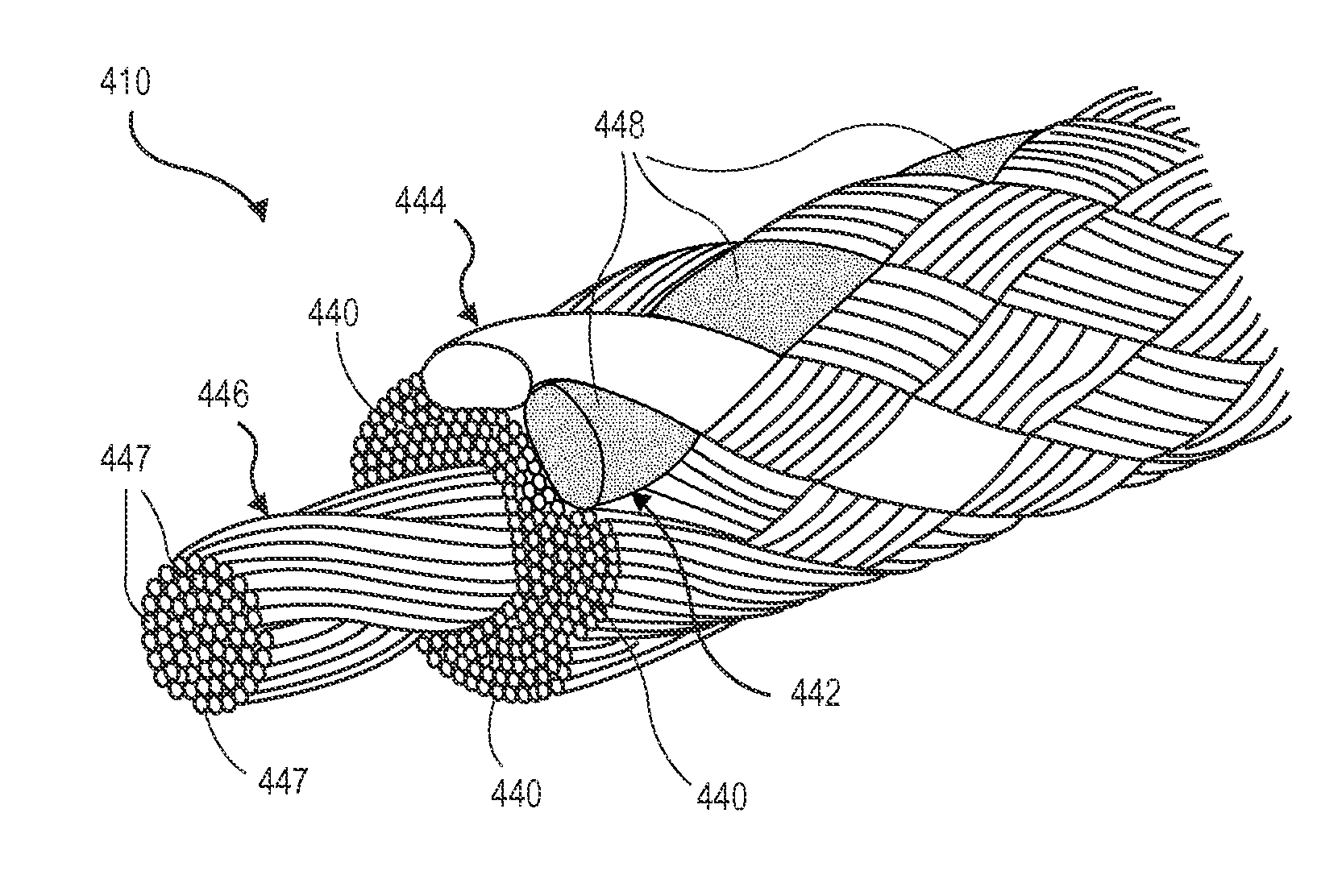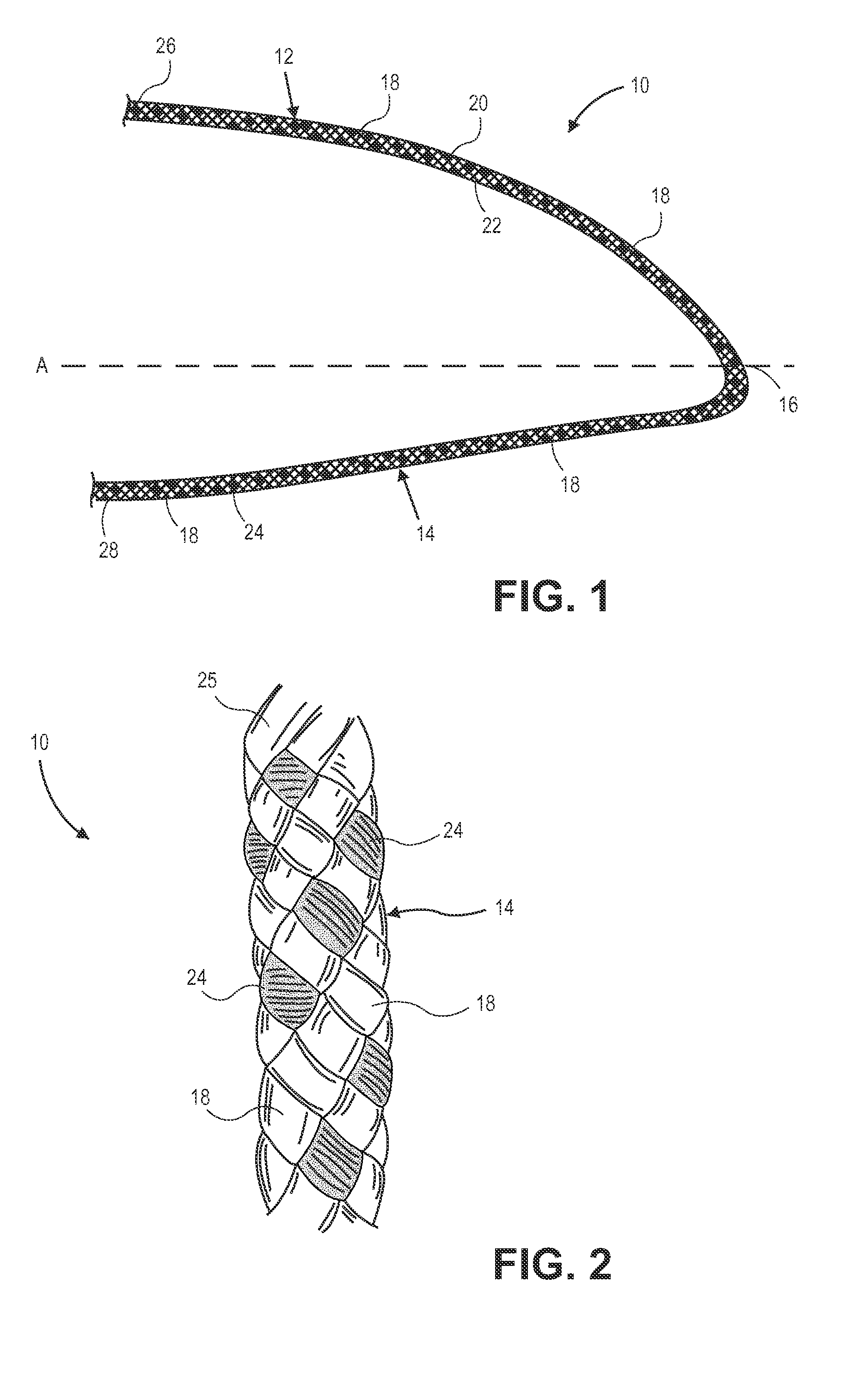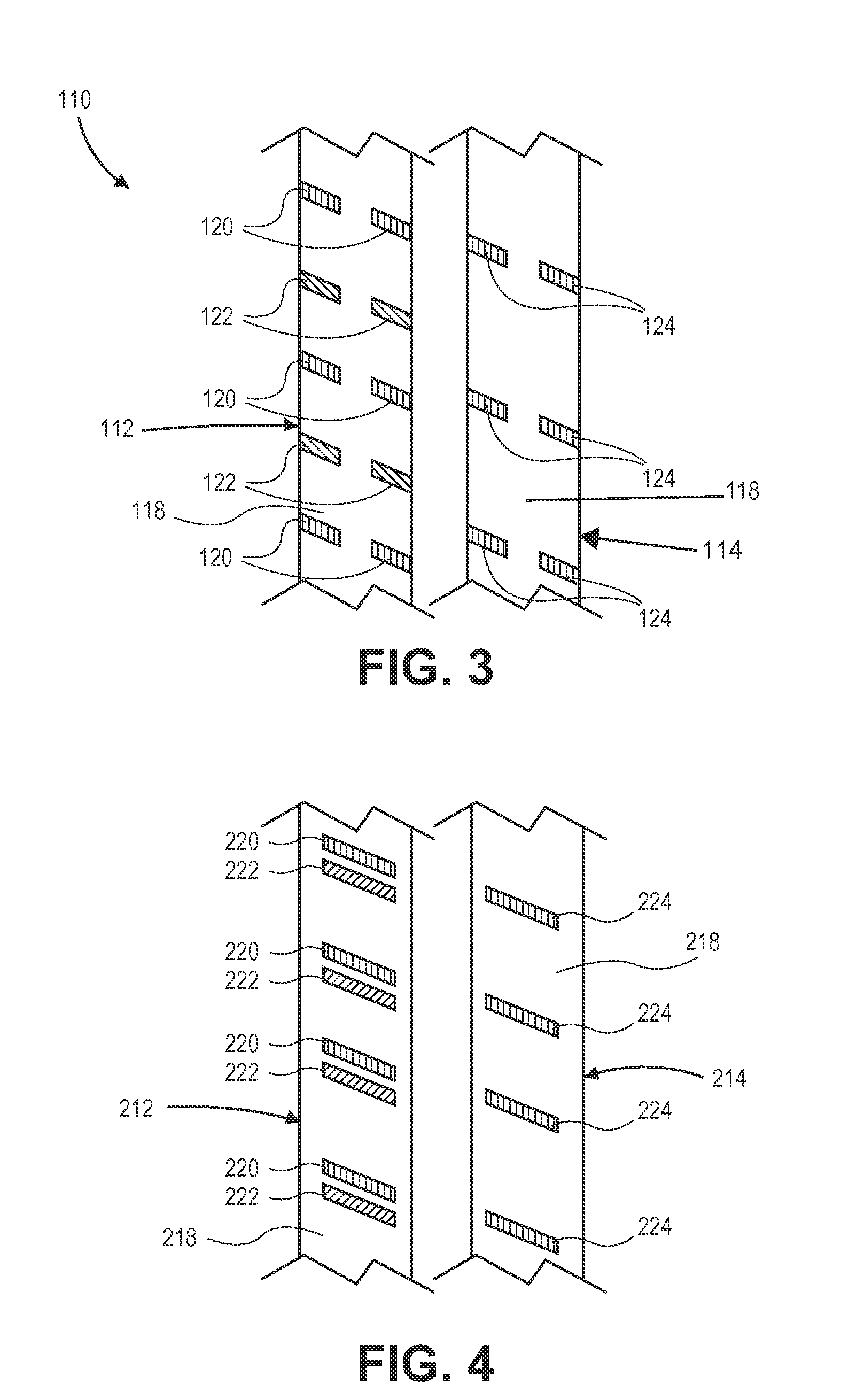Colored Suture Construction
a color construction and suture technology, applied in the field of sutures, can solve the problems of inability to use fibers that are too stiff in a monofilament form for larger sutures, limitations in the color available for all sutures, and certain inherent limitations of how color can be added to some sutures
- Summary
- Abstract
- Description
- Claims
- Application Information
AI Technical Summary
Benefits of technology
Problems solved by technology
Method used
Image
Examples
Embodiment Construction
[0026]The present invention provides, in some embodiments, a braided, colored suture construction. The colored suture is an elongate woven braid of filaments including at least a first end made of an ultra high molecular weight polyethylene (UHMWPE). The suture preferably includes several ends of UHMWPE braided together. The ends of UHMWPE are a multifilament fiber as is well known in the art. The braided, colored suture also includes an end made of a material which contains a colorant which can be either a dye or a pigment in a single continuous color, and another end made of a dyeable material of which at least a portion of its length is dyed a different color. Preferably such dyed portion of the different colored end constitutes only half the length of the suture. This invention provides surgeons with improved recognition of suture ends in surgery by construction of a bi-colored co-braid with at least two ends of different colors braided into a UHMWPE construction. One of the col...
PUM
| Property | Measurement | Unit |
|---|---|---|
| molecular weight | aaaaa | aaaaa |
| color | aaaaa | aaaaa |
| length | aaaaa | aaaaa |
Abstract
Description
Claims
Application Information
 Login to View More
Login to View More - R&D
- Intellectual Property
- Life Sciences
- Materials
- Tech Scout
- Unparalleled Data Quality
- Higher Quality Content
- 60% Fewer Hallucinations
Browse by: Latest US Patents, China's latest patents, Technical Efficacy Thesaurus, Application Domain, Technology Topic, Popular Technical Reports.
© 2025 PatSnap. All rights reserved.Legal|Privacy policy|Modern Slavery Act Transparency Statement|Sitemap|About US| Contact US: help@patsnap.com



